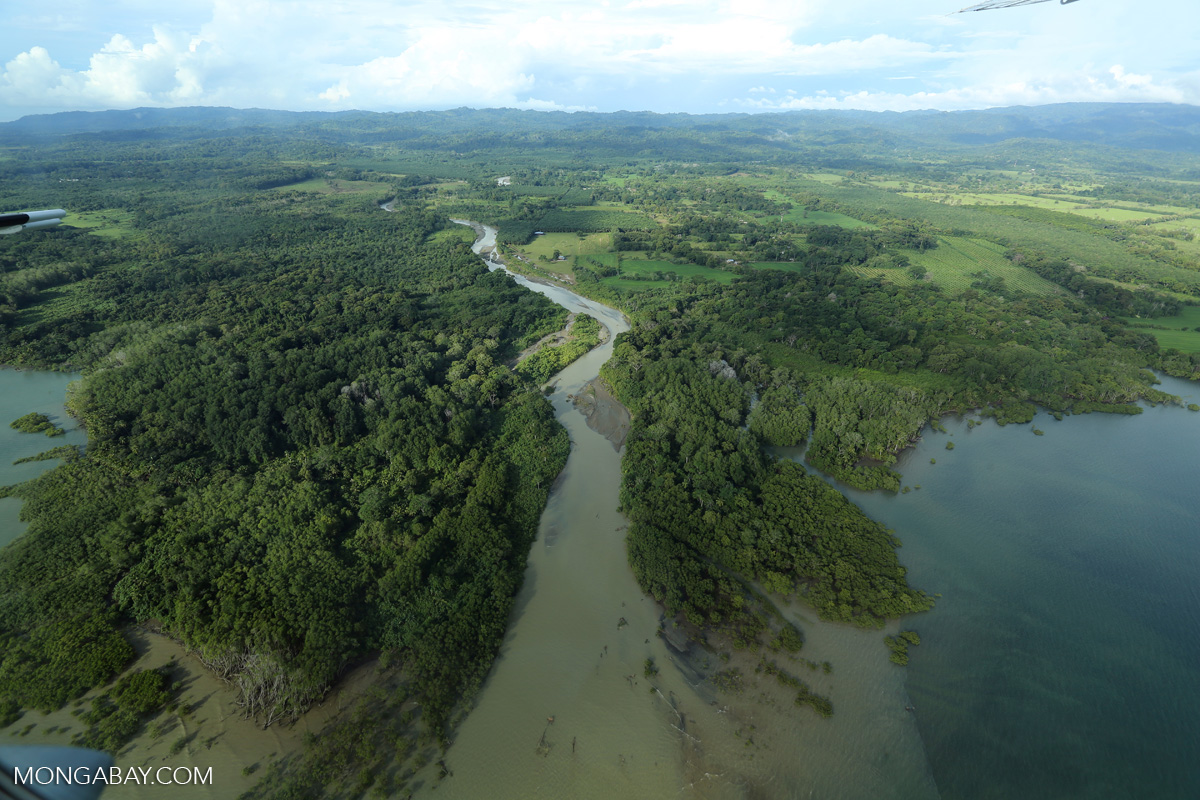- Costa Rica currently has laws in place to protect riparian zones along waterways, but they are unevenly enforced.
- Implementing these laws, even at the bare minimum of maintaining a 10-meter (33-foot) strip of riverbank vegetation, could lead to benefits for water quality and people, according to a new modeling study.
- The study shows that a small increase in forest cover around waterways can reduce nutrient and sediment runoff, especially on steeper lands and near farms and cities.
- Increases in water quality from riparian zones would improve drinking water for vulnerable populations in Costa Rica.
Trees and plants along the banks of waterways are more than picturesque. They serve as a line of defense, absorbing pollutants and keeping harmful runoff out of rivers and streams. But how much forest needs to be preserved along the rivers to do the job?
Even a small strip of forest can make a difference, according to a new Stanford University-led study published in the journal Ecosystem Services.
Costa Rica’s Forest Law 7575 mandates the protection of forested riverfront strips 10 meters to 50 meters (33 feet to 164 feet) wide. Yet this policy, passed in 1996, is unevenly enforced, the paper says.
Using InVEST, an open-source software, the researchers modeled the effects of restoring just the minimum amount required by law, 10 meters, of riparian zones along waterways that currently have no forest buffer. According to their models, adding this amount of forest would increase the retention of phosphorus by nearly 86%, nitrogen by more than 81%, and sediment by about 4%.
“Forests around rivers are key places to target for restoration because they provide huge benefits with very little impediment to productive land,” study lead author Kelley Langhans, a Ph.D. student in biology at Stanford who is affiliated with the Natural Capital Project, said in a press release. “A small investment could have a really big impact on the health of people and ecosystems.”

Reforestation, they report, would be most helpful in places with steep sloping riverbanks where erosion is more likely; in areas with high levels of fertilizer application such as farms; and around urban areas.
The study addressed not only where but also who would benefit from enforcing the forest law, and asked if this could improve social equity for vulnerable populations. It found that these small forests could have a big impact on drinking water.
“These benefits would flow to communities that depend on rivers for drinking water and that are otherwise vulnerable. Small increases in riparian reforestation in Costa Rica, implemented via an existing law, could confer large benefits to rivers and all who depend on them,” the study says.
Alexander Fremier, a professor at Washington State University’s School of the Environment, who was not involved in the research, told Mongabay in an email that because this is a modeling study, “there are limitations to how benefits should be interpreted.”
“Riparian reforestation is a common approach to limit unwanted nutrients being transported from mainly agriculture and urban areas to rivers and streams,” Fremier said. “Although there is a lot known about the benefits, the scale of this study is unique and helpful for matching national policy to national and sub-national [state-level] benefits.”
Rafael Monge Vargas, study co-author and director of the National Geoenvironmental Information Center under Costa Rica’s Ministry of Environment and Energy, said the study “provides a model for using realistic, policy-based scenarios to pinpoint areas where forest restoration could have the largest impact in terms of improving people’s health and meeting national adaptation and emissions goals.”
Banner image: A black river turtle on a log in Tortuguero National Park, Costa Rica. Image by Ralph Earlandson via Flickr (CC BY-NC-SA 2.0).
Citation:
Langhans, K. E., Schmitt, R. J., Chaplin-Kramer, R., Anderson, C. B., Vargas Bolaños, C., Vargas Cabezas, F., … Daily, G. C. (2022). Modeling multiple ecosystem services and beneficiaries of riparian reforestation in Costa Rica. Ecosystem Services, 57, 101470 doi:10.1016/j.ecoser.2022.101470
Liz Kimbrough is a staff writer for Mongabay. Find her on Twitter: @lizkimbrough_
FEEDBACK: Use this form to send a message to the author of this post. If you want to post a public comment, you can do that at the bottom of the page.
